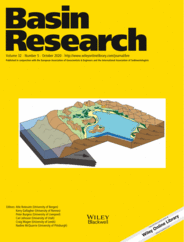
Full text loading...
 , Luis Gibert2
, Luis Gibert2 , Dioni I. Cendón3,4
, Dioni I. Cendón3,4 , David Artiaga1, Hugo Corbí5
, David Artiaga1, Hugo Corbí5 , Jesús M. Soria5
, Jesús M. Soria5 , Tim K. Lowenstein6, Enrique Sanz7
, Tim K. Lowenstein6, Enrique Sanz7
The Lorca and Fortuna basins are two intramontane Neogene basins located in the eastern Betic Cordillera (SE Spain). During the Late Tortonian—Early Messinian, marine and continental evaporites precipitated in these basins as a consequence of increased marine restriction and isolation. Here we show a stratigraphic correlation between the evaporite records of these basins based on geochemical indicators. We use SO4 isotope compositions and Sr isotopic ratios in gypsum, and halite Br contents to characterize these units and to identify the marine or continental source of the waters feeding the evaporite basins. In addition, we review the available chronological information used to date these evaporites in Lorca (La Serrata Fm), including a thick saline deposit, that we correlate with the First Evaporitic Group in Fortuna (Los Baños Fm). This correlation is also supported by micropalaeontological data, giving a Late Tortonian age for this sequence. The Second Evaporitic Group, (Chicamo Fm), and the Third Evaporitic Group (Rambla Salada Fm) developed only in Fortuna during the Messinian. According to the palaeogeographical scheme presented here, the evaporites of the Lorca and Fortuna basins were formed during the Late Tortonian—Early Messinian, close to the Betic Seaway closure. Sulphate isotope compositions and Sr isotopic ratios of the Ribera Gypsum Mb, at the base of the Rambla Salada Fm (Fortuna basin), match those of the Late Messinian selenite gypsum beds in San Miguel de Salinas, in the near Bajo Segura basin (40 km to the East), and other Messinian Salinity Crisis gypsum deposits in the Mediterranean. According to these geochemical indicators and the uncertainty of the chronology of this unit, the assignment of the Rambla Salada Fm to the MSC cannot be ruled out.
,Palaeogeographical evolution sketch of the Betic seaway during Late Miocene.

Article metrics loading...

Full text loading...
References


Data & Media loading...

